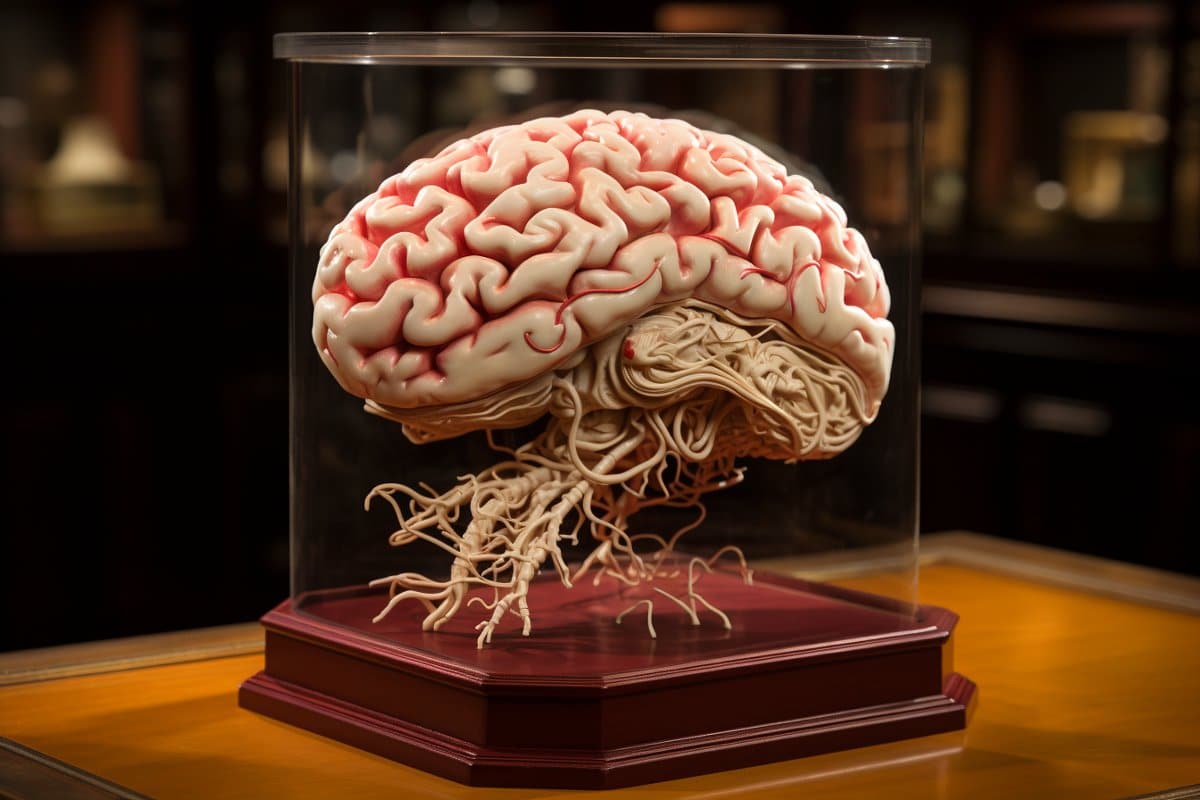Summary: Researchers developed 20 novel recombinant rabies viral vectors that present unparalleled advantages for neural circuit mapping in aging and Alzheimer’s disease studies. These vectors are engineered to highlight microstructural changes in brain neurons through enhanced fluorescent proteins, offering insights into neural networks at both micro and macro scales.
The vectors’ unique ability to target specific neuron components and perform live imaging makes them potent tools for dissecting neural circuitry in healthy and diseased states. This innovation opens new pathways for targeted treatment strategies and will be shared with the neuroscience community through UCI’s Center for Neural Circuit Mapping.
Key Facts:
- The new rabies viral vectors enable precise anatomical mapping and functional studies of neural circuits, improving upon current tools with enhanced imaging capabilities.
- These vectors allow for specific targeting of neuron biology, aiding in the analysis of pathological changes in brain diseases like Alzheimer’s.
- The research team plans to distribute these innovative tools via UCI’s established service platform, fostering broader applications in neuroscience research.
Source: UC Irvine
A research team led by the University of California, Irvine has created 20 new recombinant rabies viral vectors for neural circuit mapping that offer a range of significant advantages over existing tools, including the ability to detect microstructural changes in models of aging and Alzheimer’s disease brain neurons.
The study published today online in the journal Molecular Psychiatry, introduced proof-of-concept data demonstrating the power of these new vectors, which express a range of improved fluorescent proteins to provide expanded multi-scale multi-modal capabilities.

Naturally occurring rabies infections target the nervous system. Scientists harnessed this tendency to create engineered forms of the rabies virus that are coupled to sensors and other payloads – for example, some respond to light by turning bright green and act as tracers that map brain circuits.
“Viral genetic tools are critical for improving anatomical mapping and functional studies of cell-type-specific and circuit-specific neural networks,” said Xiangmin Xu, co-corresponding author and UCI Chancellor’s Professor of anatomy & neurobiology and director of the Center for Neural Circuit Mapping.
“These new variants significantly enhance the capability and reach of neural labeling and circuit mapping across microscopic and macroscopic imaging scales and modalities, including 3D light and X-ray microscopy. We will make these new tools readily available to the neuroscience community through our established service platform at the CNCM.”
These new recombinant viral vectors are designed to target very specific components of neuron biology in order to analyze pathological changes that occur during Alzheimer’s disease and other brain diseases.
They can be targeted to specific sub-cellular locations and organelles, as well as live imaging of neuronal activities using calcium indicators. The team conducted imaging analysis of mouse brains to demonstrate the discovery power of these new tools.
“These cutting-edge tools hold immense potential for understanding neural circuitry in both normal and pathological conditions and offer the ability to target specific regions of the brain with precision peptides or proteins to modulate neuronal functions for targeted treatment strategies,” said Bert Semler, co-corresponding author and UCI Distinguished Professor of Microbiology & Molecular Genetics.
Alexis Bouin, Ph.D. and Ginny Wu are co-first authors who led and coordinated the project. Additional team members include Orkide Koyuncu, assistant professor of microbiology & molecular genetics; Qiao Ye, graduate student; Michele Wu, Liqi Tong, Ph.D., and Lujia Chen, Ph.D., members of the Xu lab, and Todd Holmes, professor of physiology & biophysics. Leveraging the UCI Center for Neural Circuit Mapping’s broad collaborative network, team members from UCSD include Keun-Young Kim, Sebastien Phan, Mason R. Mackey, Ranjan Ramachandra, and Distinguished Professor Mark H. Ellisman.
Funding: This work was supported by National Institutes of Health grants RF1MH120020, R01FD007478, R35GM127102, R24GM137200, U24NS120055, and R01DA038896; and National Science Foundation grant NSF2014865-UTA20-00890.
About this brain mapping research news
Author: Patricia Harriman
Source: UC Irvine
Contact: Patricia Harriman – UC Irvine
Image: The image is credited to Neuroscience News
Original Research: Open access.
“New rabies viral resources for multi-scale neural circuit mapping” by Xiangmin Xu et al. Molecular Psychiatry
Abstract
New rabies viral resources for multi-scale neural circuit mapping
Comparisons and linkage between multiple imaging scales are essential for neural circuit connectomics. Here, we report 20 new recombinant rabies virus (RV) vectors that we have developed for multi-scale and multi-modal neural circuit mapping tools.
Our new RV tools for mesoscale imaging express a range of improved fluorescent proteins. Further refinements target specific neuronal subcellular locations of interest.
We demonstrate the discovery power of these new tools including the detection of detailed microstructural changes of rabies-labeled neurons in aging and Alzheimer’s disease mouse models, live imaging of neuronal activities using calcium indicators, and automated measurement of infected neurons. RVs that encode GFP and ferritin as electron microscopy (EM) and fluorescence microscopy reporters are used for dual EM and mesoscale imaging.
These new viral variants significantly expand the scale and power of rabies virus-mediated neural labeling and circuit mapping across multiple imaging scales in health and disease.






